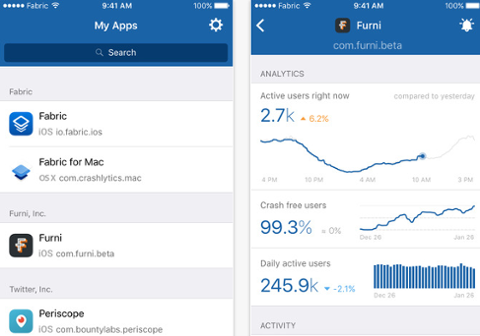
As a few developers have noticed, there’s no streaming connection capability or home timeline data, which are only used by a small amount of developers (roughly 1% of monthly active apps). As we retire aging APIs, we have no plans to add these capabilities to Account Activity API or create a new streaming service for related use cases.Twitter plans to allow timeline refreshes to occur via a
statuses/home_timeline endpoint, but it’s an inelegant solution. Popular third-party client TweetBot recently launched anew for macOS, and Tapbots team member Paul Haddad tells TechCrunch the endpoint workaround means tweets will be delayed by at least 60 seconds. All this comes as Twitter recently dropped its macOS app entirely:
We're focusing our efforts on a great Twitter experience that's consistent across platforms. So, starting today the Twitter for Mac app will no longer be available for download, and in 30 days will no longer be supported.
— Twitter Support (@TwitterSupport) February 16, 2018
@TwitterDev: So, we’re finally cutting off non clients at the knees Users: Are you going to pay attention to your apps like all the other Platforms that have cut off API access?@TwitterDev: Oh, heavens no!#DeleteTwitter
— Zach Waldowski (@zwaldowski) May 16, 2018
Paid Twitter Is Now Reality
Another popular (and good) Twitter client is Twitteriffic, which recently crowdfunded development of its macOS client. Twitteriffic developer Sean Heber hints that the app is maybe doomed, while pointing out that Account Activity API is expensive:Moreover, developers just gained access to the Account Activity API, which only grants 15 free licenses (meant for testing). It follows previous changes to Twitter data, which chased most developers onto the paid Gnip tier. This all seems as though Twitter is trying to become a tightly-wound platform-as-a-service to encourage better monetization. This potential strategy was indicated last year when Twitter developer relations head Andy Piper replied to a question about bookmarks with: "As we stated on the blog nearly a year ago, the API plans are focused on data features and access, more than on delivering client app product features.” He pointed developers to Twitter’s publicly-viewable Trello roadmap for more info. While developers for apps such as Twitteriffic and TweetBot don’t publicly announce how many users they serve, history provides a frame of reference. Fenix and Falcon Pro, two now-defunct Twitter clients, once hit the platform’s 100,000 token limit. If we assume a Twitteriffic or TweetBot has as many users, and Twitter will charge around $2,900 per month for 250 users – it comes out to well over $1 million per month for app developers. It’s unclear what ‘enterprise’ pricing packages will be made available, but even at half the cost, this is untenable for an independent developer or small company. We also don’t see a path forward for a subscription model. Premium pricing suggests TweetBot or Twitteriffic would cost users about $12 per month – which is break-even for developers.The public pricing that I’m seeing shows Twitter’s Account Activity API pricing as $2,899/month to get activity updates… for 250 users.
Needless to say, we have more than 250 users. It’s possible an “enterprise” deal could be made, but it seems unlikely to be affordable. — Sean Heber (@BigZaphod) May 16, 2018
An exercise:
At 100,000 users, and $2,900 for 250 users per the ‘premium’ Account Activity API tier, that’s about $1.1 million per month a dev has to pay. Just to break even, a subscription would be $12/month for users. Hope enterprise pricng is great. #breakingmytwitter — nateSwanner (@NateSwanner) May 16, 2018
Twitter Wants to be Twitter
Favstar, the service that apps such as TweetBot use to populate favorites and retweets, might be the canary in the coal mine: It has decided to close up shop on June 19. The reason? The "environment of uncertainty" that Twitter and the Account Activity API have created. Apps of a Feather, a site created by the founders and developers of various third-party Twitter clients, notes that, while Twitter announced its API intentions last year, it never looped developers in on what was going on or elicited feedback privately. It also says thestatuses/home_timeline endpoint means “automatic refresh of your timeline just won't work: there is no web server on your mobile device or desktop computer that Twitter can contact with updates. Since updating your timeline with other methods is rate-limited by Twitter, you will see delays in real-time updates during sporting events and breaking news.” Twitter wants to be Twitter, just like Facebook is Facebook. But these changes come at a time when people are actively considering where and how they get information, and may be more willing to move away from mainstream platforms. Twitter may also chase away "developer Twitter," the legion of tech pros who engage there daily, with these moves. It’s odd that a platform that prides itself on being contextual would do anything to limit such a selling point, but this is where we are. Twitter should tread lightly, though; users of third-party Twitter clients are a loyal bunch, and if they find a new platform to call home (micro.blog, for instance), it may just cause a true exodus. But that might be fine with Twitter, which seemingly has no interest in supporting developers, anyway. 
